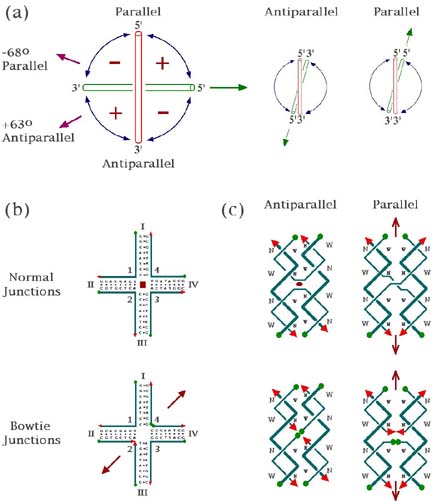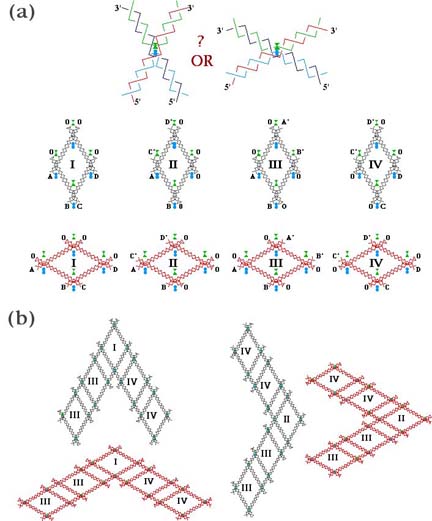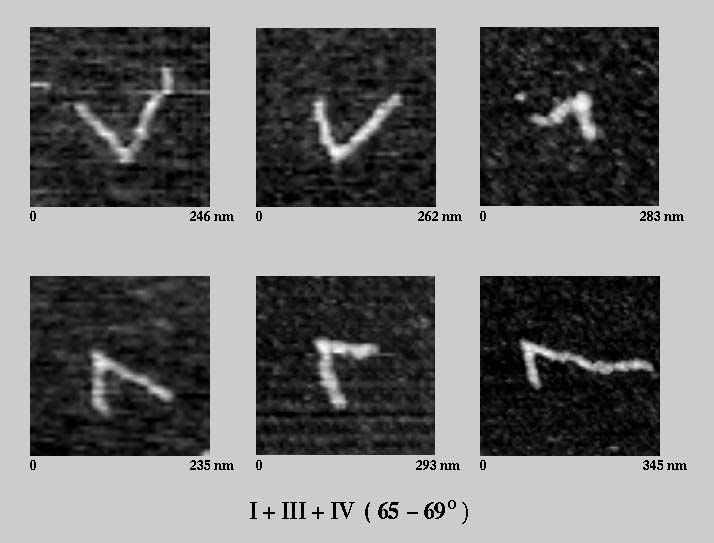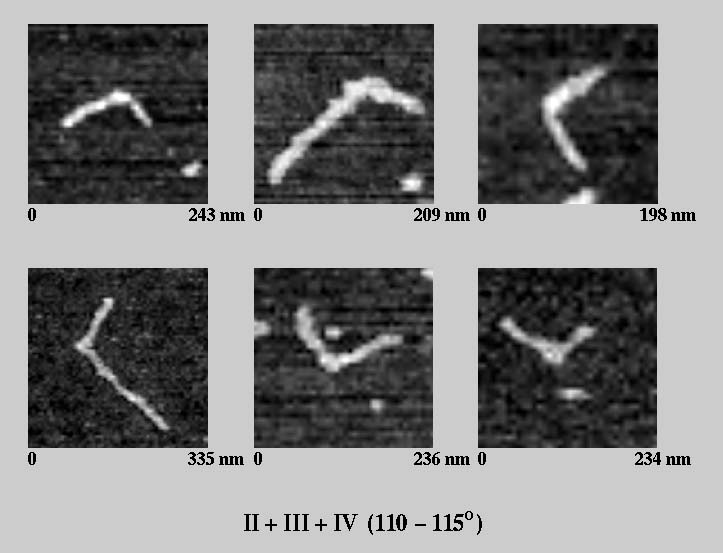

How do we know that these molecules are parallel, rather than antiparallel? Preliminary evidence was obtained from gel mobility studies, but the more interesting demonstration was provided by AFM. Neither normal nor Bowtie junctions are ideally parallel or antiparallel. Rather, they differ from these structures by about 60 - 70 degrees. Thus, we we talk about parallel or antiparallel, we are asking the question in the top line of (a) in the diagram below. To establish which is the correct structure, we made the four parallelograms below, labeled I, II, III and IV. If parallel, the parallelograms will look like the blue ones on the second line, and if antiparallel, the parallelograms will look like the red ones on the third line. We can make V-shaped arrays of these parallelograms, using I or II at the vertex, and III and IV as the extenders to form the sides of the 'V'. (b) of the diagram below shows that a V-shaped array made from I, III, and IV will have an acute angle if parallel, and an obtuse angle if antiparallel. Likewise, a V-shaped array made from II, III and IV will have an obtuse angle if parallel and an acute angle if antiparallel.

The answers are shown below. First, the I, III, IV array:

Next, the II, III, IV array:

From this experiment it is clear that Bowtie junctions are parallel, rather than antiparallel.
Return to Two Dimensional Arrays
Return to Ned Seeman's Nanotechnology Page
Return to Homepage for Ned Seeman's Lab